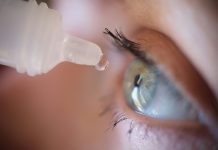
When we think about our health, it’s like keeping a balance between different factors that affect our well-being.
Just like balancing a seesaw, where you need to keep both ends in check, managing our body’s cholesterol and blood pressure levels is crucial for maintaining good health.
There’s a common question that puzzles many: Can someone have high cholesterol but still have low blood pressure? Let’s dive into this topic, breaking down the science into simpler terms so that everyone can understand.
First off, cholesterol and blood pressure are two different aspects of our health, each playing its unique role. Cholesterol is a fatty substance found in our blood. It’s not all bad; in fact, our body needs a certain amount of it to function correctly.
However, too much cholesterol, especially the “bad” kind known as LDL (low-density lipoprotein), can lead to problems like heart disease and stroke. This is because excess cholesterol can build up in the walls of our blood vessels, making them narrower and harder.
On the flip side, blood pressure is the force that our blood exerts on the walls of our blood vessels as it’s pumped around the body.
When blood pressure is too high, it puts extra strain on the arteries and the heart, which can also lead to cardiovascular diseases. But what happens when someone has high cholesterol levels but low blood pressure?
It might seem counterintuitive, but it’s entirely possible to have high cholesterol levels while maintaining low or normal blood pressure. These two conditions don’t always go hand in hand because they are influenced by different factors.
Cholesterol levels are significantly affected by diet, genetics, and lifestyle choices such as exercise and smoking. Meanwhile, blood pressure can be influenced by a variety of factors, including stress levels, sodium intake, age, and certain medical conditions.
Research has shown that individuals can indeed have a combination of high cholesterol and low blood pressure. One reason is that the mechanisms controlling blood pressure and cholesterol levels in the body are distinct from each other.
For instance, while a diet high in saturated fats may raise cholesterol levels, it doesn’t necessarily lead to an increase in blood pressure. Similarly, genetic factors may predispose someone to have higher cholesterol without affecting their blood pressure.
This peculiar combination of high cholesterol but low blood pressure doesn’t mean one is safe from health issues. High cholesterol can still pose a risk for heart disease and stroke, regardless of blood pressure readings.
Therefore, it’s crucial for individuals to manage their cholesterol levels through a healthy diet, regular exercise, and, if necessary, medication prescribed by a healthcare provider.
Moreover, research evidence suggests that focusing on a holistic approach to health, considering both cholesterol and blood pressure, along with other factors like blood sugar levels and body weight, is essential for reducing the risk of cardiovascular diseases.
This approach emphasizes the importance of regular health check-ups and personalized advice from healthcare professionals.
In conclusion, while it may seem like a balancing act, managing high cholesterol and low blood pressure is indeed possible and crucial for overall health.
Understanding that these conditions can occur simultaneously helps us appreciate the complexity of our bodies and the importance of a comprehensive approach to health care.
By staying informed and proactive in managing our health, we can keep the balance right, ensuring a healthier life ahead.
If you care about high blood pressure, please read studies that early time-restricted eating could help improve blood pressure, and natural coconut sugar could help reduce blood pressure and artery stiffness.
For more information about blood pressure, please see recent studies about added sugar in your diet linked to higher blood pressure, and results showing vitamin D could improve blood pressure in people with diabetes.
Copyright © 2024 Knowridge Science Report. All rights reserved.



